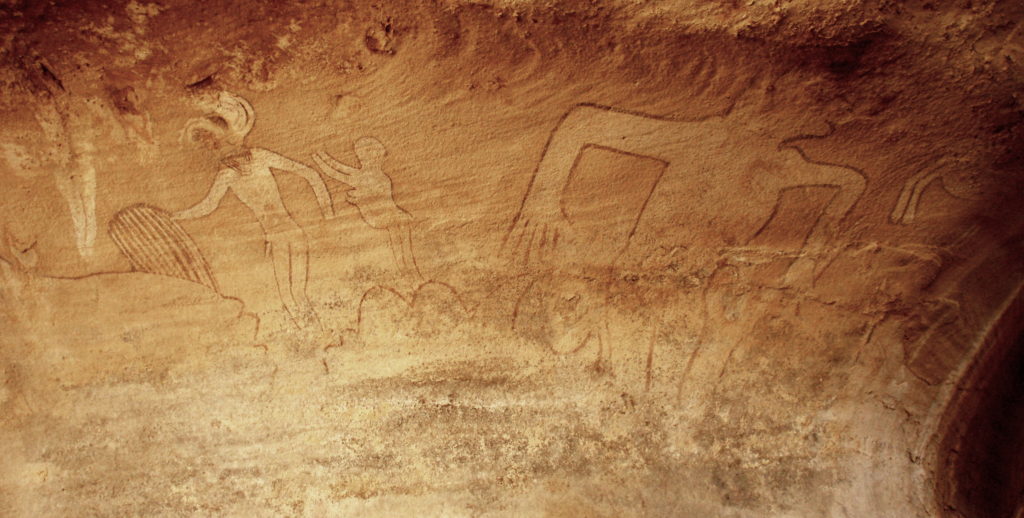Round Head paintings

Sefar Blanc, Tassili n´Ajjer
In the chronological/stylistic sequence of the Saharan rock art, Round Heads are placed among the oldest rock art groups. This phase is mainly characterized by the representation of anthropomorphic figures and of a few animal species, mainly mouflon and antelope. The size of figures ranges from several centimetres up to four metres.
The Round Head paintings are concentrated in four main areas: The north-western Tassili, Tassili Plateau, Acacus and Algerian Tadrart. Even though this artistic tradition shows similar features throughout the region, it consists of several internal styles.
The Round Head paintings are spatially separated from the Bubaline petroglyphs which are mainly concentrated outside the Round Head area, in the Messak, east of the Acacus. Bubaline petroglyphs are very rare on the Tassili Plateau which is dominated by Round Heads. These two styles are more closely present in the Acacus and Algerian Tadrart but they usually occupy different sites. On the other hand, the Round Head paintings and the Kel Essuf petroglyphs share the same territory and often they are present in the same shelters.
Several attributes are characteristic for the Round Head anthropomorphic figures such as horn-like protuberances on the head and half-moon like objects attached to the shoulders. Often the figures are adorned with bracelets, necklaces, a kind of skirt or false tail attached at the waist and they are holding short sticks. These attributes are not simple decorative elements but they are functional indicators within the society producing Round Heads.
Symbolism is perceptible in virtually all the painted compositions, represented by body decorations, masks, fantastic creatures, dances and processions. All these elements occupy such an important place in the paintings that they must be assigned a fundamental role in the representation of the world that they portray. Scenes representing possible ordinary life are rare.